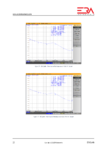meryem_eda
Newbie
Hello all.
What is the best way to generate a single tone signal with best phase noise and spurious performance?
Is frequency multiplication the best way? single stage multiplication or multi stage multiplication?
I want to produce a single tone 6 GHz signal with a 100 MHz Sine Wave OCXO by multi stage multiplication.
For best phase noise and spurious performance what issues are important to notice?
Best Regards.
Thanks.
What is the best way to generate a single tone signal with best phase noise and spurious performance?
Is frequency multiplication the best way? single stage multiplication or multi stage multiplication?
I want to produce a single tone 6 GHz signal with a 100 MHz Sine Wave OCXO by multi stage multiplication.
For best phase noise and spurious performance what issues are important to notice?
Best Regards.
Thanks.
